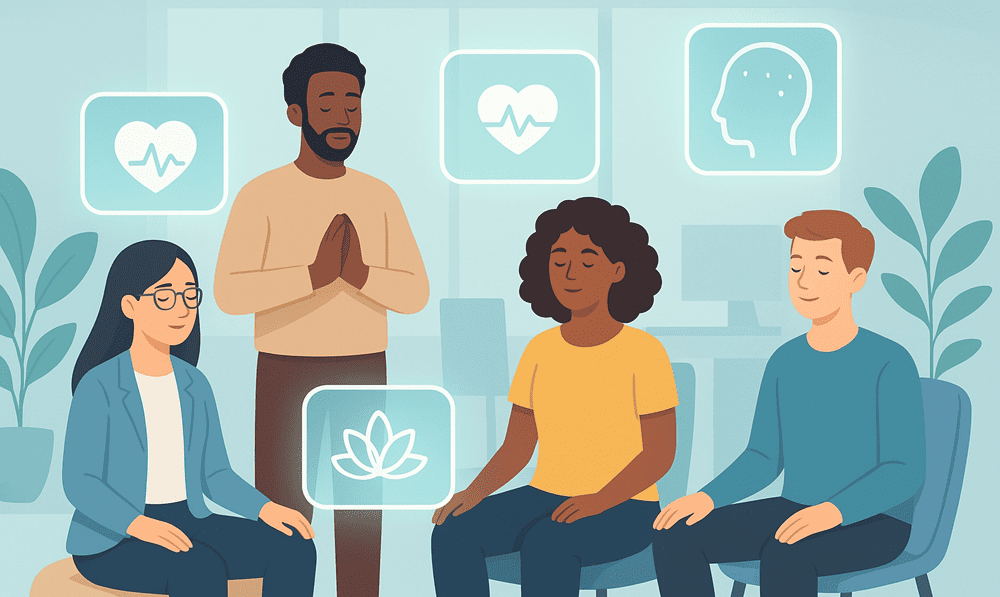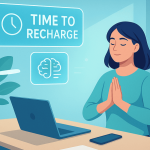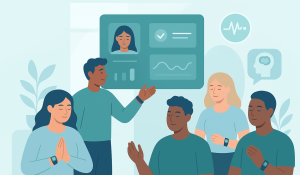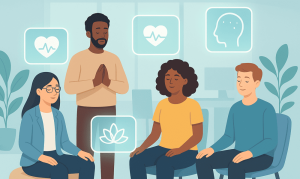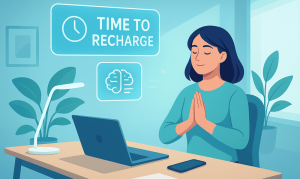In today’s rapidly evolving workplaces, employee wellbeing can no longer be approached with a “one-size-fits-all” mindset. Modern organizations are increasingly recognizing that diversity, equity, and inclusion go hand in hand with employee mental health. That’s where inclusive AI wellness programs are starting to reshape how companies care for their people adapting support to meet every individual’s unique needs.
These AI-driven initiatives combine data insights, personalized nudges, and adaptive tools to make wellbeing accessible to everyone from neurodiverse professionals to those facing cultural, emotional, or accessibility barriers.
Why Inclusion Matters in AI Wellness Design
Traditional wellness programs often fail to reach everyone equally. A global study by Deloitte found that while 80% of organizations have wellness initiatives, less than 30% of employees feel those programs truly meet their needs.
That’s because many initiatives are still built for the “average” worker — assuming equal access, identical motivations, and universal stress triggers.
But in reality, workforces are increasingly diverse. Employees vary in how they communicate, process information, and respond to stress. For AI wellness systems to work, they must reflect that diversity.
This is where inclusive AI wellness programs can make a meaningful impact. By recognizing individual differences and adapting in real time, these programs help organizations create fairness in wellbeing access — a critical step toward diversity wellbeing.
The Core of Inclusive AI Wellness Programs
Building an inclusive AI wellness system means designing technology that listens, learns, and adapts. Here are five essential components that define an effective program:
- Personalized Interaction Models
AI should communicate in ways that feel natural to each user. For instance, neurodiverse employees may prefer text-based interactions with clear structure, while others may respond better to conversational check-ins. - Culturally Sensitive Data Models
Algorithms should be trained to respect cultural context — avoiding assumptions in tone, feedback style, or coping recommendations. - Adaptive AI Coaching
Through continuous learning, AI wellness systems can modify coaching approaches depending on an employee’s behavior, engagement level, and feedback trends. - Accessibility by Design
Tools should work for people using screen readers, different languages, or voice-only interfaces. - Privacy and Consent Transparency
Inclusivity also means psychological safety. Employees must know what data is collected, how it’s used, and that opting out is always an option.
When implemented thoughtfully, these elements turn AI wellness systems into genuine allies of inclusivity rather than surveillance tools.
From Diversity to Belonging: The Role of AI in Modern Workplaces
Diversity alone doesn’t guarantee inclusion. Employees must feel understood and supported to truly belong. A report by McKinsey found that companies with high inclusivity scores outperform their peers by up to 36% in profitability. That’s not just HR data, that’s business strategy.
Inclusive AI wellness tools can strengthen this link between wellbeing and performance. They help organizations extend equitable mental health support to all employees, regardless of personality type, communication preference, or neurotype.
For example, using AI for neurodiverse employee support allows HR teams to identify where certain groups may face higher stress or communication friction without labeling or isolating individuals. Instead, AI simply adjusts how help is delivered.
How Inclusive AI Supports Neurodiversity
Neurodiversity inclusion has become one of the most important conversations in today’s workforce. Around 15–20% of people worldwide are estimated to be neurodivergent, according to Harvard Health. Yet many wellness and productivity tools remain built for neurotypical behaviors.
With neurodiversity inclusion AI, organizations can bridge that gap through adaptive interaction. For example:
- Custom focus prompts and quiet time nudges for those with sensory sensitivity.
- Structured goal setting with clear, visual progress cues.
- Optional emotion labeling features for those who struggle to articulate stress verbally.
These subtle design features create accessibility without drawing attention to differences — a hallmark of well-designed inclusivity.
AI Coaching and Inclusive Leadership
Technology alone can’t create inclusion — leadership must champion it. That’s why many organizations are integrating AI coaching for leaders alongside employee wellness systems.
When leaders receive insights on emotional tone, team stress trends, or communication patterns, they can act faster and more empathetically. For instance, an AI dashboard might alert a manager if a team shows consistent low engagement after late-night work sessions. Instead of waiting for burnout to surface, proactive conversations can begin early.
This style of AI-assisted awareness creates a leadership culture rooted in care — not micromanagement.
Turning Data into Action: AI and HR Collaboration
HR departments hold the key to scaling these programs effectively. When AI for HR is designed inclusively, it doesn’t just track absenteeism or performance — it helps HR spot patterns that indicate wellbeing imbalances.
For example:
- Repeated late log-ins might signal sleep issues.
- Declining response rates in check-ins could mean disengagement.
- Reduced participation in team chats might indicate emotional overload.
When HR teams use these insights responsibly, they can tailor programs that meet employees where they are — not where the company assumes they should be.
AI Tools That Encourage Emotional Awareness
Inclusive AI wellness programs work best when emotional awareness becomes part of everyday routines. Many teams now use AI emotional check-in tools that send gentle, reflective prompts throughout the week.
Instead of long surveys, these micro-interactions might ask:
- “How’s your focus today?”
- “Would you like to try a quick relaxation tip?”
- “Are you feeling supported by your workload this week?”
These simple nudges make employees feel seen without invading privacy. Over time, this builds a more emotionally intelligent culture — one where wellbeing becomes a shared value, not an HR checkbox.
Handling Workplace Crises Inclusively
Even with proactive programs, crises can happen — from mental health emergencies to emotional exhaustion. That’s where AI psychological first aid tools can play a vital role.
These systems can detect distress signals in real time (such as tone changes or reduced responsiveness) and offer supportive resources — like guided breathing, confidential chat connections, or links to human counselors.
It’s not about replacing human care but about creating an always-available safety layer for employees who may hesitate to reach out directly.
Why Businesses Should Care About Inclusivity in AI Wellness
Inclusive wellness isn’t just an HR trend, it’s a business performance driver. Companies that prioritize inclusive wellbeing report:
- 2.5x higher engagement rates
- 60% lower turnover in high-stress departments
- 31% increase in innovation outcomes
When employees feel understood and supported, they stay longer, think more creatively, and contribute more meaningfully. Inclusive AI programs transform “wellbeing” from a side project into a measurable advantage.
Final Thoughts
Designing inclusive AI wellness programs is about more than adding tech to wellbeing — it’s about designing technology that understands people. When you combine adaptive AI coaching, diversity wellbeing, and equitable mental health support, you create systems that respect human difference while fostering connection and performance.
Businesses that take this approach aren’t just building healthier teams; they’re shaping a workplace culture that thrives on inclusion, empathy, and smart automation.
And in the long run, that’s the real competitive edge, a workforce that feels cared for, seen, and supported by technology built for everyone.

